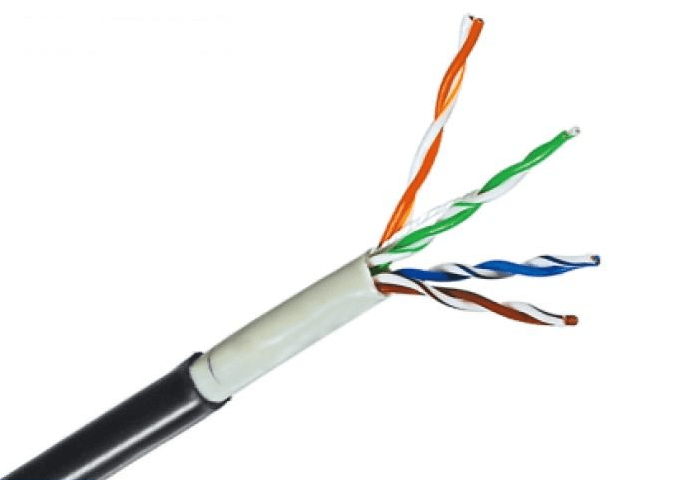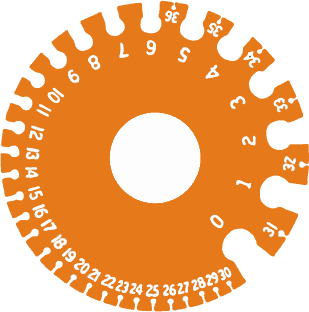This article is dedicated to the detalized overview of the UTP cable structure.
First, and most notable specification of the cable is the outer layer, or the “wire insulation”. Choice of the insulator is based on multiple factors: dielectric constant, dissipation factor, etc.
Dielectric constant is the value that specifies the level of conductivity of the material. To be precise, it specifies the level of how poor is the level of conductivity is (that is why it is called dielectric constant). Dissipation factor, is the measure of how much the insulation properties would affect the signal inside the copper cables (it is especially important for long distances, where signal loss is noticeable).

Materials for insulation manufacturing are varying depending on cost, fire safety, and transmission properties. To satisfy all three factors manufacturers have to create combinations of non-flammable materials together with polyolefin (or similar type of insulator with high transmission properties). Why could not pure polyolefin be used for the insulator? Answer is simple – it is highly flammable.
If the one is reading this article, then it is most likely that the one is familiar with color coding of each of the UTP inside cables. They come in different colors (or color pairs) for easier identifications. These colors are based on the international standards, and are mentioned in almost any manual for cabling or network equipment.
When the outer insulator is taken off the cable, usually inner cables are twisted in pairs. By the standard, if the cable has at least two twists per foot (30 cm) then it is a “twisted-pair” cable. Twists are made not only for esthetic value, but mainly for electromagnetic interference cancellation.
 Wire Gauge is the terminology used for defining diameter of the cable. AWG (American Wire Gauge) is most common measuring system for that. The values in this system increase while the diameter of the cable decreases. In other words, bigger cable means smaller AWG value, smaller cable – bigger AWG. While larger cables have advantages of smaller interference and higher physical strength, they are impractical, due to increased cost (requires more material) and installation difficulties. That is the reason for the never ending improvements of cabling, while keeping current size – they are offering better transmission rates, while offering same physical specifications.
Wire Gauge is the terminology used for defining diameter of the cable. AWG (American Wire Gauge) is most common measuring system for that. The values in this system increase while the diameter of the cable decreases. In other words, bigger cable means smaller AWG value, smaller cable – bigger AWG. While larger cables have advantages of smaller interference and higher physical strength, they are impractical, due to increased cost (requires more material) and installation difficulties. That is the reason for the never ending improvements of cabling, while keeping current size – they are offering better transmission rates, while offering same physical specifications.
Another difference there could be between the UTP cables is the solid and stranded conductor. Solid conductor is mostly used in every part of the network, for connection between equipment. It has solid copper core in the middle of inner insulation. However stranded conductors core is made of many smaller wires interwoven together. This type of conductor is mostly used for short distance cables or patch cables. It makes cable more flexible, while loosing its electrical properties. When choosing type of core for the cable, one should remember that stranded conductor cable would require different connectors, does not work well with punch-down blocks, and signal will degrade around 20% compared to solid conductor. It is also critical factor for distances and speeds for an equipment like LAN extender family and GSHDSL modems.


